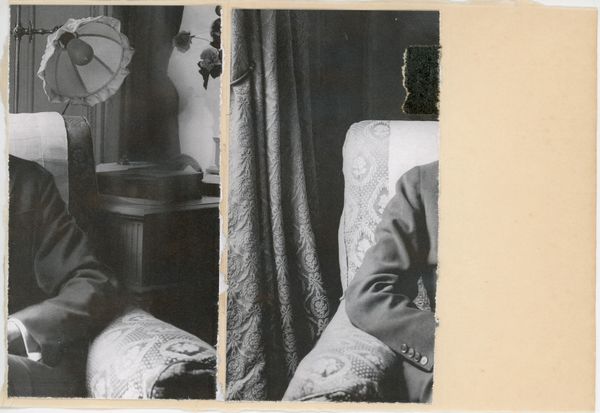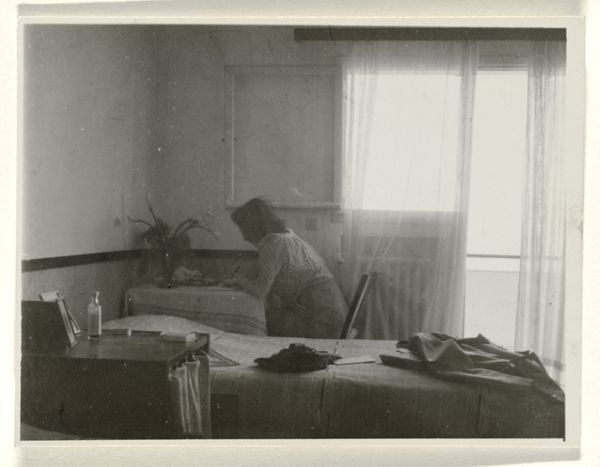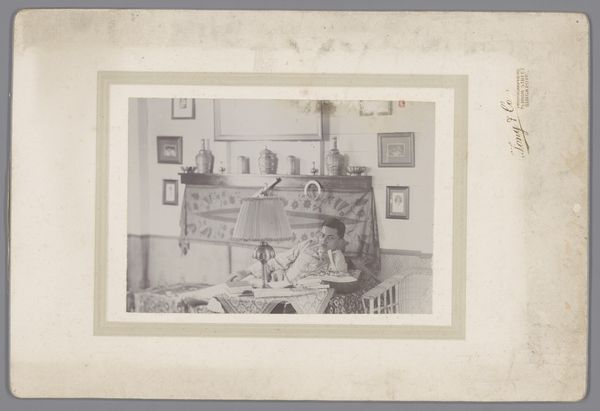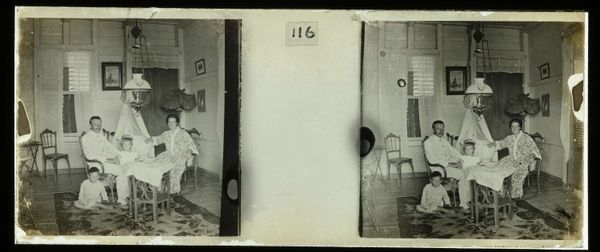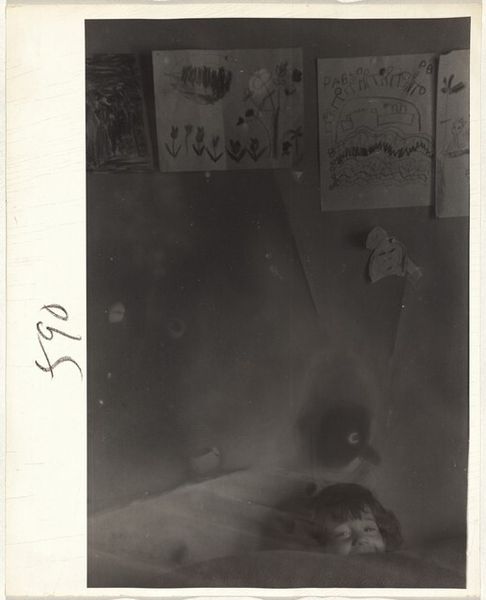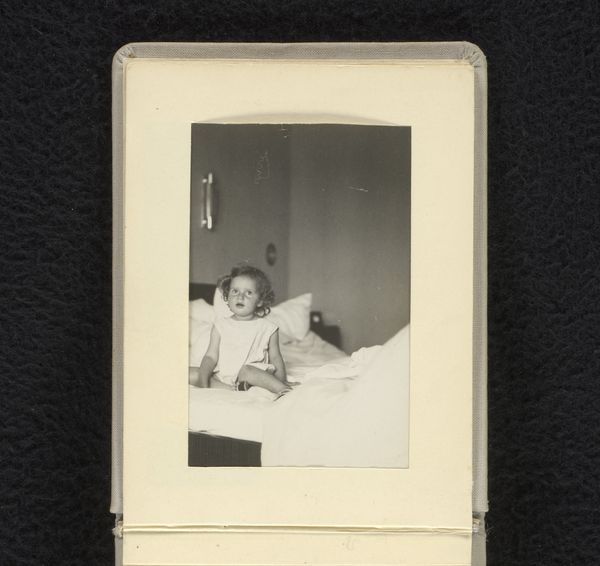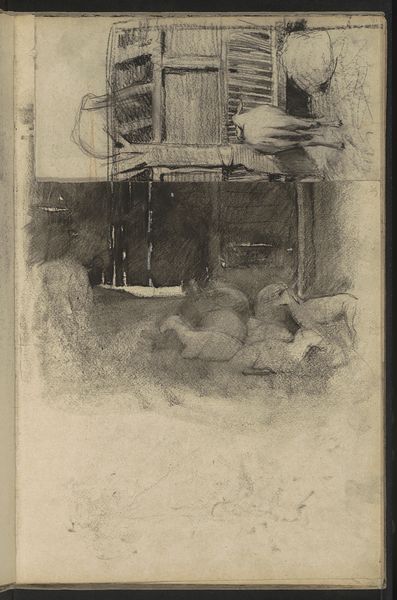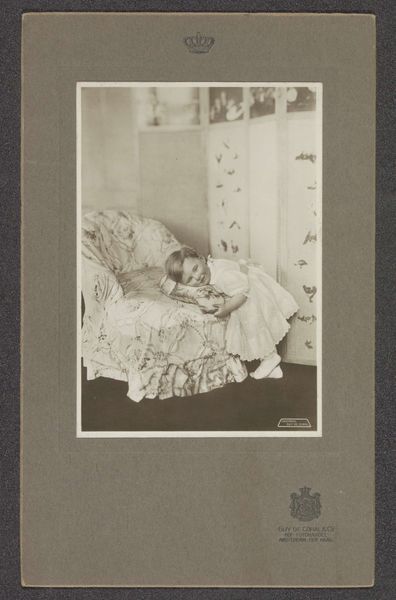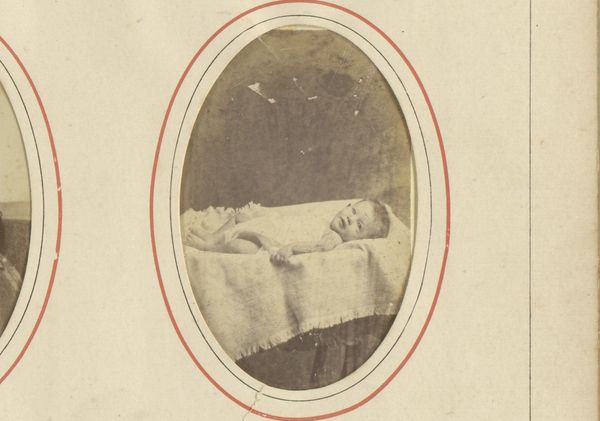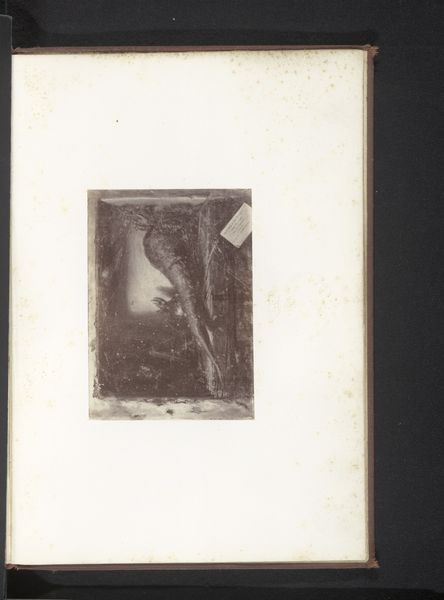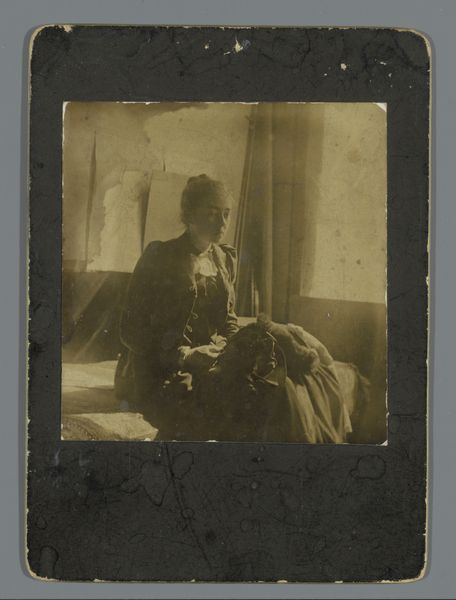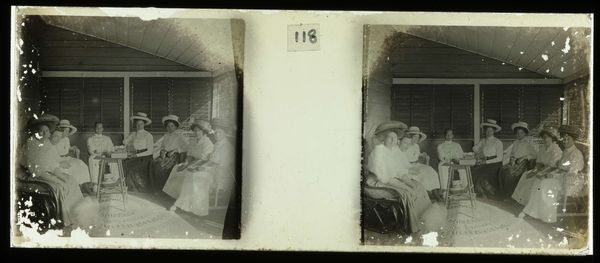
Isabel Wachenheimer liggend in een ziekenhuisbed in het sanatorium Etania in Davos, 12 augustus 1945 Possibly 1945 - 1948
0:00
0:00
photography, gelatin-silver-print
#
portrait
#
film photography
#
photography
#
gelatin-silver-print
#
realism
Dimensions: height 55 mm, width 80 mm
Copyright: Rijks Museum: Open Domain
Editor: Here we have a gelatin-silver print, a photograph entitled *Isabel Wachenheimer liggend in een ziekenhuisbed in het sanatorium Etania in Davos, 12 augustus 1945,* dated somewhere between 1945 and 1948 by an anonymous photographer. The image is dreamlike, suffused with a sepia tone. I'm immediately drawn to Isabel's expression – one of genuine happiness despite her environment. What can you tell me about this image? Curator: Well, consider the sanatorium itself. Traditionally, a liminal space, a border between life and death, health and sickness. Lightbulbs, window - rectangular geometry abounds - containers that signify thresholds and boundaries. In a time of war and displacement, the sickroom emerges as an emotional nexus, imbued with yearning, memory, and the search for healing. Does her laughter suggest acceptance, defiance, or perhaps a more complex reconciliation? Editor: It's fascinating to consider the sanatorium as a symbolic space, and the emphasis on her expression makes me reconsider what's visible and what's intentionally obscured in the composition. Curator: Observe also the contrast in textures: the smooth metal of the bed frame against the possible grain of the wall, all softened through photography. Do you think this hints at a dialogue between the subject's internal state and the starkness of her external world? Perhaps also commenting on photography itself: How do photographs serve as emblems of hope, recovery, or simply existence during uncertain times? Editor: That's a good point. The textures definitely add a layer of depth, hinting at an unseen reality beyond Isabel’s joyous expression. I see how photographic images hold personal stories in such difficult times. Curator: Exactly. Photography's ability to fix a fleeting moment renders the subject almost timeless, turning her individual experience into a collective remembrance of that era. Editor: Thank you! This new perspective is invaluable, giving new meaning to the context behind that initial joy I saw, framing our understanding of that time.
Comments
No comments
Be the first to comment and join the conversation on the ultimate creative platform.

